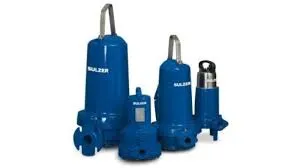Russian
- Afrikaans
- Albanian
- Amharic
- Arabic
- Armenian
- Azerbaijani
- Basque
- Belarusian
- Bengali
- Bosnian
- Bulgarian
- Catalan
- Cebuano
- Corsican
- Croatian
- Czech
- Danish
- Dutch
- English
- Esperanto
- Estonian
- Finnish
- French
- Frisian
- Galician
- Georgian
- German
- Greek
- Gujarati
- Haitian Creole
- hausa
- hawaiian
- Hebrew
- Hindi
- Miao
- Hungarian
- Icelandic
- igbo
- Indonesian
- irish
- Italian
- Japanese
- Javanese
- Kannada
- kazakh
- Khmer
- Rwandese
- Korean
- Kurdish
- Kyrgyz
- Lao
- Latin
- Latvian
- Lithuanian
- Luxembourgish
- Macedonian
- Malgashi
- Malay
- Malayalam
- Maltese
- Maori
- Marathi
- Mongolian
- Myanmar
- Nepali
- Norwegian
- Norwegian
- Occitan
- Pashto
- Persian
- Polish
- Portuguese
- Punjabi
- Romanian
- Russian
- Samoan
- Scottish Gaelic
- Serbian
- Sesotho
- Shona
- Sindhi
- Sinhala
- Slovak
- Slovenian
- Somali
- Spanish
- Sundanese
- Swahili
- Swedish
- Tagalog
- Tajik
- Tamil
- Tatar
- Telugu
- Thai
- Turkish
- Turkmen
- Ukrainian
- Urdu
- Uighur
- Uzbek
- Vietnamese
- Welsh
- Bantu
- Yiddish
- Yoruba
- Zulu
Telephone: +86 13120555503
Email: frank@cypump.com
Ноя . 25, 2024 10:13 Back to list
Efficient Solutions for Wastewater Pumping in Modern Infrastructure
Understanding Sewage Pumps An Essential Component of Wastewater Management
Sewage pumps play a crucial role in modern wastewater management systems. These pumps are designed to transport sewage and wastewater from residential, commercial, and industrial facilities to treatment plants. Understanding their function, types, and maintenance needs is essential for anyone involved in plumbing, construction, or facilities management.
What is a Sewage Pump?
A sewage pump is a type of pump specifically engineered to handle the solids and liquids in sewage systems. Unlike typical water pumps, which may only be used to move clear water, sewage pumps are robust enough to handle the abrasive and corrosive nature of wastewater. They are primarily responsible for transferring sewage from lower elevations to higher ones, ensuring that waste is effectively transported to treatment facilities.
Types of Sewage Pumps
Sewage pumps come in various types, each designed for specific applications. The two most common types are submersible pumps and effluent pumps.
- Submersible Sewage Pumps These pumps are designed to operate underwater. They are placed directly in the sewage pit or basin, which allows them to handle solids and liquids quickly. Submersible pumps are equipped with a sealed motor to prevent water intrusion, improving their longevity and reliability.
- Effluent Pumps Effluent pumps are used to move liquid wastewater that contains fewer solids compared to the raw sewage that submersible pumps handle. They are often used in septic systems where wastewater needs to be moved from a treatment tank to a drain field.
sweage pump

The Importance of Sewage Pumps
Sewage pumps are indispensable in preventing sewage overflow and backup, which can lead to serious environmental and health hazards. When sewage systems malfunction or become overwhelmed, untreated wastewater can contaminate soil and waterways, posing risks to human health and the ecosystem. By effectively transporting waste to treatment facilities, sewage pumps help maintain sanitary conditions and protect public health.
Proper Installation and Maintenance
For sewage pumps to function optimally, proper installation and regular maintenance are essential. Installation should be carried out by qualified professionals who understand the specific requirements of the system, including the necessary capacity and head height.
Regular maintenance includes routine checks for wear and tear, cleaning of the pump and its components, and immediate attention to any unusual sounds or performance issues. Neglecting maintenance can lead to clogs, pump failures, and costly repairs.
Conclusion
In summary, sewage pumps are critical components of wastewater management systems that ensure the safe and effective transport of sewage. Understanding the different types and their functions can enhance both residential and commercial waste management strategies. Regular maintenance and proper installation are key to ensuring these vital systems work efficiently, safeguarding public health and the environment. As our population continues to grow, the importance of effective sewage management will only increase, making the role of sewage pumps more vital than ever.
-
High-Performance Air Pumps for Sand & Gravel | Efficient Transport
NewsAug.03,2025
-
ISG Series Vertical Pipeline Pump - Chi Yuan Pumps Co., LTD.|Energy Efficiency, Corrosion Resistance
NewsAug.03,2025
-
ISG Series Pipeline Pump - Chi Yuan Pumps | Energy Efficiency&Compact Design
NewsAug.03,2025
-
ISG Series Vertical Pipeline Pump - Chi Yuan Pumps Co., LTD.|High Efficiency, Low Noise, Durable
NewsAug.02,2025
-
ISG Series Vertical Pipeline Pump - Chi Yuan Pumps | High Efficiency, Low Noise
NewsAug.02,2025
-
ISG Series Vertical Pipeline Pump- Chi Yuan Pumps Co., LTD.|High Efficiency&Compact Design
NewsAug.02,2025










